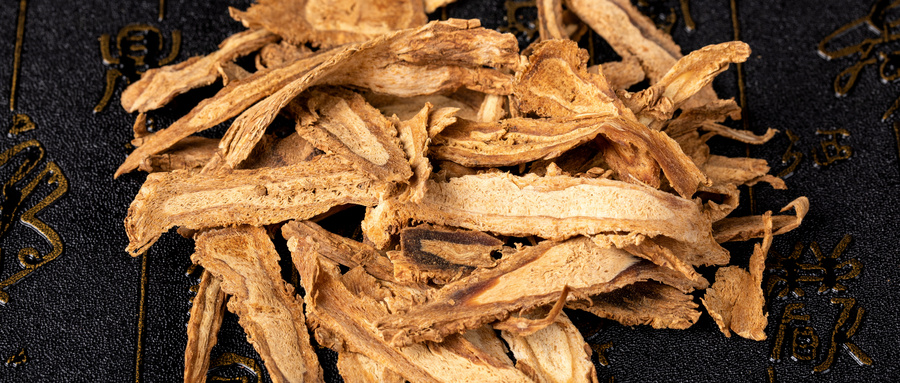[Name]
Snow Pig Meat
[Alias]
Drought Leper, Groundhog
[Functions and Indications]
Used to treat damp-heat itching, rheumatism and pain, as well as foot, knee, and joint swelling and pain.
[Dosage and Administration]
4-8 liang (approximately 160-320 grams), stewed in soup and taken orally.
[Excerpted from]
1. "National Compendium of Chinese Herbal Medicine"
2. "Materia Medica of China": Snow Pig Meat
3. From "Sichuan Materia Medica". "Yinshan Zhengyao": People in the north dig and eat Groundhog, although it is fat, boiling it produces no oil, and the soup has no taste. It is difficult to digest if consumed in large quantities, but a small amount can invigorate the qi.
[Source]
Origin of Medicinal Materials: The meat of animals from the Marmot family, including Himalayan marmot, Gray marmot, Steppe marmot, and Long-tailed marmot.
Scientific Names: 1. Marmota himalayana Hodg. 2. Marmota baibacina (Brandt) 3. Marmota bobac Miiller 4. Marmota caudata Jacquemont
Collection and Storage: After hunting, remove the fur and internal organs, take the meat, and use it fresh or spread it open with bamboo strips or air dry it.
[Original Form]
1. Himalayan marmot, a large ground-dwelling squirrel.
Body length: 46-58cm, weight: 3-6kg. Short and thick neck. Short and round ears. Flat and short tail, about 13cm long, not more than twice the length of the hind feet. Strong and stout limbs, the thumb of the front feet is degenerated, with very small claws, while the other 4 toes have long and curved claws, and the claws of the hind feet are shorter. The side of the snout is light brown with black whiskers. The nose is black or dark brown. There is a distinct black stripe above the eye socket. The top of the head is a mixture of black and brown, and the sides to the base of the ears are light yellow. The back is a mix of brown and irregular black stripes, with the middle part of the hair being pale and the tip being black. The throat, chest, abdomen, and limbs are all light yellow, and the base of the hair is dark gray. The buttocks are dark brownish-yellow. The hair on the tail is similar to the body color, with only the tip being black. The color of the young marmot is lighter than that of the adult.
2. Gray marmot
Similar in size and shape to the Himalayan marmot, but the belly is darker, with a deep brownish-yellow or grayish-brown color. Body length: 46-54cm, weight: 4-6kg. Small and short ears. Short and stout claws. The tail is shorter, 13-15cm long, less than 1/3 of the body length. The back is light yellow or sandy yellow, interspersed with black or dark brown. The snout, cheeks, and the area below the ears are dark brownish-brown. The ears are sandy yellow. The tail is similar in color to the body, but the tip is black-brown.
3. Steppe marmot
Small in size, about 36-49cm long, weighing 3-4kg. The tail is 11-12cm long, about twice the length of the hind feet. The back is light brown or light rust color, interspersed with light white, without any black or brown color. The forehead and the top of the head are pure brown. The ears are light orange-yellow. The belly is brownish-brown, with the base of the hair being dark brown. The tail is dark brown, with a rusty-brown tip.
4. Long-tailed marmot
A large marmot. Body length: 47-50cm, weight: 4-5kg. The tail is longer, 18.5-22cm, significantly longer than twice the length of the hind feet. The ears are very small and barely visible. The fur is long and thick. The whole body is orange-yellow or reddish-yellow, with the hair on the back often dyed dark brown. The belly color is similar to the back color, but the brown is darker, and there is no obvious boundary between the back and abdomen. The tail end is black or reddish-brown.
[Habitat and Distribution]
Ecological Environment:
1. Inhabits high mountain meadows at an altitude of 2800-5000m. Lives in burrows and colonies. Active during the day and hibernates. Mainly feeds on the tender branches and leaves of herbaceous plants and shrubs.
2. Inhabits grasslands and meadows at an altitude of 2500-3500m. Prefers moist areas. Lives in burrows. The entrance of the burrow is marked by a mound, known as a marmot mound. Feeds on plants.
3. Inhabits the edge areas where geothermal anomalies and grasslands intersect. Lives in colonies. The burrows are mostly built on high or sloping ground, with mounds outside the entrances. Feeds on grass roots and seeds.
4. This species is one of the representative species in the subalpine meadow zone. Inhabits high mountain meadows and dense grassy areas in grasslands. Lives in burrows and also likes to live in colonies. Yellow marmot mounds can be found near the entrances of the burrows. Mainly feeds on plants from the Cyperaceae and Poaceae families.
Distribution:
1. Distributed in Gansu, Qinghai, Sichuan, Yunnan, Tibet, and other places.
2. Only distributed in the northern part of Xinjiang.
3. Distributed in the eastern part of Inner Mongolia and the northern part of Xinjiang.
4. Distributed in the western and southern parts of Xinjiang.












